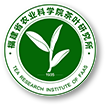Abstract:
Objective Chemical composition and elastase-inhibition activity of the water extract of white tea were analyzed for determination of active ingredients in the column separation eluents.
Method The spray-dried powder of boiling water-extracted Baimudan White Tea was dissolved in 400 mL of distilled water at the concentration of 5 mg·mL−1 (E0) to pass through an XAD-4 ion exchange macroporous resin as adsorbent to collect the eluent (E1) followed by using three different mobile phases of the mixed solutions of 0.5 mol·L−1 NaCl and 1 mol·L−1 HCl (1∶40, v/v), distilled water, and 85% ethanol to collect eluents E2, E3, and E4, respectively. Chemicals, including tea polyphenols (TP), total flavonoids (TFls), caffeine (CAF), gallic acid (GA), and catechins (i.e., GC, EGC, C, EGCG, EC, GCG, ECG, and CG), were analyzed to correlate with the fluorescence quenching effects on porcine pancreatic elastase (PPE) of E0 as well as the 4 eluents.
Result The contents of TP, TFls, and WSS in E0 and the eluents ranked as E0>E1>E4>E2>E3, with those of E0, E1, and E4 significantly differed from one another (P<0.05). That of CAF ranked as E0>E4>E1>E2>E3 with significant differences, except between E1 and E2 (P<0.05). Those of GA, GC, EGC, and C ranked as E0>E1>E4, while EGCG, EC, GCG, ECG, and CG ranked as E0>E4>E1, all significantly differed from one another (P<0.05). The PPE fluorescence quenching rates of the eluents in a constant volume significantly differentiated in the order of E0 (46.0%)>E1 (29.3%)>E4 (26.0%). A significant positive Pearson correlation was observed between the quenching rate and TP or TFls content with a coefficient of 0.99 (P<0.01) but not significant between that and CAF, GA, or CAF content.
Conclusion On an XAD-4 ion exchange macroporous resin, the Baimudan White Tea extract was sent to collect several eluents that included E1 from the first elution, then E2 from flashing with 0.5 mol·L−1 NaCl and 1 mol·L−1 HCl mixed 1∶40 v/v acidic solutions, E3 from washing with distilled water, and E4 from eluting with 80% ethanol. The last eluent contained significantly fewer chemicals with lower quenching activities than E0. Among the chemicals, polyphenols and total flavonoids closely related to the PPE quenching and were speculated as the key contributor of the bioactivity of the tea extract.




 下载:
下载: